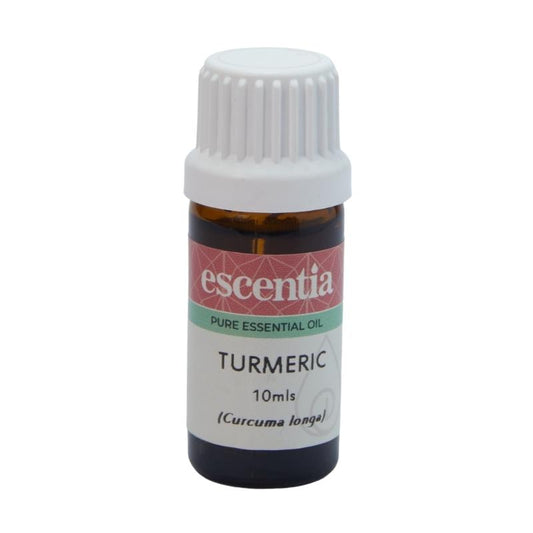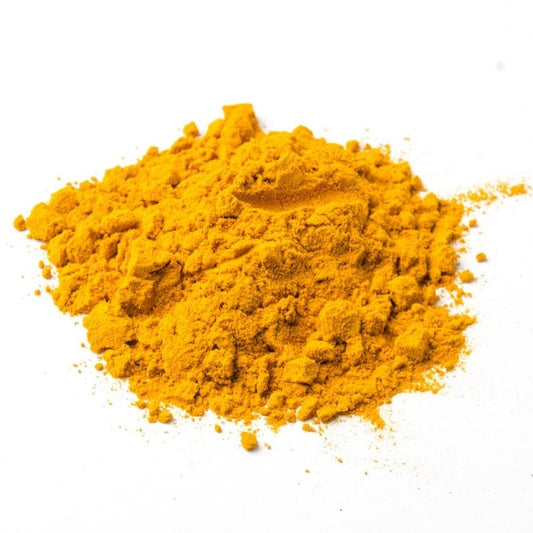
Turmeric: The Golden Spice for Skin and Overall Health
Cayla MandeanHave you ever felt overwhelmed by the sheer number of products and supplements promising to solve your skin and health concerns? Consider turmeric, derived from the Curcuma longa plant, turmeric isn't just a kitchen staple-it's an all-round, powerful ingredient known for its amazing anti-inflammatory, anticancer, antidiabetic, anti-osteoarthritis, anti-microbial, anti-inflammatory and skin brightening properties. Other properties include antidepressant and anti-aging effects, as well as wound healing and memory-enhancing properties.
Let's explore how turmeric can "spice" up your skincare and wellness routine.
What is Turmeric?
Turmeric has been used for thousands of years in Ayurvedic and traditional Chinese medicine. Sourced from the root of the Curcuma longa plant, turmeric is loaded with several bioactive compounds, the most prominent being curcumin. This compound is responsible for turmeric's distinct colour and its extensive list of medicinal properties.
Turmeric Spice:
The spice is made by harvesting the mature rhizomes (underground stem) of the Curcuma longa plant, which are boiled, dried, and ground into a fine yellow powder. This powder is used widely in cooking and traditional medicine.
Turmeric Essential Oil:
The essential oil is extracted from the plant's rhizomes. Turmeric essential oil is valued for its therapeutic properties and is used in aromatherapy, skincare, and holistic health applications.
With a rich history and a strong body of scientific research, turmeric's role in promoting skin health and well-being has never been clearer. From its antioxidant and anti-inflammatory properties to its potential to protect against chronic diseases, turmeric offers a holistic approach to wellness.
In addition to incorporating turmeric powder in your diet or as an extract, turmeric essential oil is another powerful form of this golden spice that offers concentrated benefits for both skin and overall health. Extracted from the turmeric root, this essential oil retains the potent curcumin compound, making it an excellent addition to skincare and wellness routines.
How Turmeric Benefits the Skin
Brightening and Even Skin Tone:
Turmeric is praised for its ability to brighten the skin and even out the complexion. It inhibits tyrosinase, an enzyme involved in melanin production, helping to reduce dark spots, hyperpigmentation, and melasma.
Anti-inflammatory Properties:
Curcumin, the active component in turmeric, is a powerful anti-inflammatory agent. It reduces redness, swelling, and irritation, making it beneficial for conditions such as eczema, psoriasis-like inflammation and rosacea. Turmeric's soothing properties make it suitable for sensitive skin, helping to calm inflamed or irritated areas.
Antioxidant Protection:
Turmeric is filled with antioxidants that protect the skin from free radical damage. Free radicals are unstable molecules that can cause oxidative stress, leading to premature aging, wrinkles, and loss of skin elasticity. By neutralising these harmful molecules, turmeric helps maintain youthful, healthy skin.
Anti-aging Benefits:
In addition to protecting against free radical damage, turmeric promotes collagen production and improves skin elasticity, which can reduce the appearance of fine lines and wrinkles.
Acne Treatment:
Thanks to its antimicrobial and anti-inflammatory properties, turmeric effectively treats acne. It helps kill acne-causing bacteria, reduce inflammation, and prevent the formation of new blemishes. Turmeric also aids in healing acne scars and preventing post-inflammatory hyperpigmentation.
What Turmeric Does to Your Body
Anti-inflammatory Effects:
Turmeric has long been used for its anti-inflammatory properties, which are beneficial not just for the skin but for the entire body. Curcumin helps reduce chronic inflammation, a key factor in many chronic diseases such as arthritis, heart failure, and metabolic dysfunction. Regular consumption of turmeric can help alleviate symptoms of inflammatory conditions and improve overall health.
Antioxidant Potential:
Curcumin is a potent antioxidant that neutralises free radicals in the body, helping to protect against oxidative stress and the damage it can cause to cells and tissues. This makes turmeric valuable and may help in preventing diseases associated with aging and cellular damage, such as cancer and neurodegenerative conditions.
Supports Digestive Health:
Turmeric has been shown to support digestive health by stimulating bile production, which aids in digestion and nutrient absorption. It can also help alleviate symptoms of digestive disorders such as irritable bowel syndrome (IBS), bloating, and gas. Its anti-inflammatory properties also help soothe the digestive tract, making it a popular remedy for stomach issues.
Boosts Immune Function:
Turmeric's immune-boosting properties are attributed to its ability to modulate the immune system. Curcumin enhances the body's defence mechanisms, making it more effective in fighting off infections and diseases. Regular consumption of turmeric can help strengthen the immune system and may reduce the risk of illnesses.
Pain Relief:
Turmeric is a natural pain reliever, often used to alleviate pain from conditions like arthritis, muscle injuries, and other inflammatory disorders. Its pain-relieving properties offer a natural alternative to conventional pain medicine.
How to Incorporate Turmeric into Your Diet
Turmeric Tea:
One of the simplest ways to consume turmeric is by making turmeric tea, also known as "golden milk." To prepare, mix a teaspoon of turmeric powder with warm milk (or a milk substitute), honey, and a pinch of black pepper. The black pepper contains piperine which enhances the bioavailability of curcumin in turmeric, increasing its absorption rate.
Recommended Usage and Safety Considerations
Patch Test:
Before introducing turmeric into your skincare routine, always perform a patch test. Although turmeric is generally well-tolerated, some individuals may experience sensitivity, especially in higher concentrations. Apply a small amount of the product to the inside of your arm, opposite the elbow or behind your ear and wait 24 hours to ensure there is no adverse reaction.
Sun Protection:
Turmeric can make the skin more sensitive to sunlight, so it's crucial to use a broad-spectrum sunscreen with SPF 30 or higher when using turmeric-based products. This helps protect the skin from UV damage and enhances the brightening effects of turmeric.
Avoid Overuse:
While turmeric is a potent ingredient, it's important not to overuse it. Combining turmeric with other strong actives like retinoids or exfoliants can increase the risk of irritation. Monitor your skin's response and adjust usage accordingly to prevent any adverse effects.
Dosage Considerations for Health:
When consuming turmeric for health benefits, it's important to be mindful of the dosage. While turmeric is generally safe, high doses of curcumin supplements can interact with certain medications. It's advisable to start with lower doses and gradually increase or consult with a healthcare provider or medical professional to determine the appropriate amount for your needs.
If you'd like to dive deeper into what to consider when formulating with turmeric, check out our blog on Formulating With Tumeric here.















